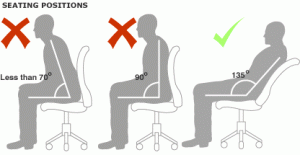Alzheimer’s and other types of dementia have become a disease that is dreaded by people approaching middle age. As the population ages it has made its way into the foreground not only for the ageing group but also for younger family members who will face difficult tasks as caregivers to their loved ones.
Research is dealing with a possibility of halting the disease progression, and there are encouraging signs, that more effective treatment will be available, as long as the condition is diagnosed and treated in its early stages.
It is also logical to look at preventative measures. Healthy lifestyle choices have been cited, and a closer look has been taken by Dr. Eric Larson, executive director of the Center for Health Studies of the Group Health Cooperative, Seattle. He reports that it does at this point not seem probable that Alzheimer’s dementia can always be prevented from happening, but the onset can be delayed. Four observational studies have shown with consistency, a 30% to 40% reduction in the incidence of Alzheimer’s when people get regular exercise.
In his own study Dr. Larson looked at 2581 individuals age 65 and over. They were tested for cognitive function and interviewed about their exercise habits every two years. It was found that those who followed an exercise regime 3 or four times per week had a 40 % reduction in the risk of developing dementia compared to those who exercised less than 3 times per week.
Exercise could consist of at least 15 minutes of hiking, aerobics, stretching, calisthenics, water aerobics, swimming, or weight training. It was also of interest to note that people with the lowest physical performance benefited most from the exercise. For people in the higher age bracket prevention of dementia (and other ills) does not have to be costly. A good pair of walking or running shoes (used more than 3 times per week) will pay a healthy dividend.
More information on prevention of Alzheimer’s and dementia: https://www.askdrray.com/dementia-prevented-with-diet-and-exercise/
Reference regarding the work of Dr. Larson: http://www.news-medical.net/news/2006/05/23/18087.aspx
Last edited December 18, 2014















